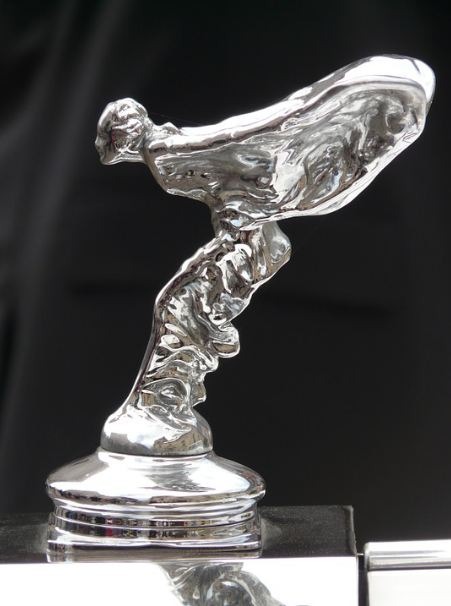Rolls Royce Motor Cars Limited, commonly known as Rolls Royce, is a British luxury car manufacturer owned by the German group BMW. It was established in 1998 after BMW acquired the rights to the Rolls-Royce brand name, logo, and the Spirit of Ecstasy. Since 2003, Rolls-Royce Motor Cars Limited exclusively manufactures all Rolls-Royce branded cars.
Rolls-Royce has had an interesting history. The luxury car and aero-engine manufacturing business was initially started by Charles Rolls and Henry Royce in the UK in 1904 and soon became a wildly popular brand worldwide. The owners liquidated the company in 1971. In 1972, following the de-merger of the Rolls-Royce automotive business from Rolls-Royce Limited (which was public), Rolls-Royce Motors was created.
The company was acquired first by Vickers in 1980 and then by Volkswagen in 1998. Bentley Motors Limited, which is a successor of Volkswagen, is the direct successor to Rolls-Royce Motors. However, Rolls-Royce Motor Cars Limited has almost no relation to any of the vehicles branded Rolls-Royce produced before 2003.
The Rolls-Royce Logo & Emblem
For long, the Rolls-Royce logo has been a double-R, after the name of the founders, Rolls and Royce. The emblem, called the Spirit of Ecstasy, was the figure of a woman leaning forward with her arms stretched behind her. Both the logo and the emblem have seen small variations in their style, shape, and size over the years.
This article will examine the variations and the design evolution in the Rolls-Royce emblem since its inception.
The Spirit of Ecstasy
The Spirit of Ecstasy is the figurine decorating the bonnets of most Rolls-Royce cars. The sculpture shows a woman who is leaning down with her arms stretched behind her and her clothes flowing from her arms to her back, looking like wings.
Why Did Rolls-Royce Feel the Need for a Mascot?
In 1909, Charles Robinson Sykes created a personal mascot for Baron John Montagu’s Rolls-Royce Silver Ghost. He made a figurine based on a model Eleanor Velasco Thornton, who had been having an affair with Montagu. The figurine was clad in fluttering robes and had a forefinger placed on her lips. The figure came to be known as The Whisper.
By 1910, mascots had become a fashion. Concerned that people were displaying inappropriate mascots on their bonnets, Rolls-Royce asked their manager to commission a dignified mascot for Rolls-Royce cars.
Sykes was chosen for this task, and he created a mascot by modifying The Whisper. That version of the emblem was called The Spirit of Speed. It was meant to embody the spirit of Rolls-Royce: speed and silence, no vibration, and great energy and grace that was almost living. Sykes later chose to call it the Spirit of Ecstasy.
Subsequent Variations in the Emblem
Rolls-Royce listed the mascot as an optional extra, but by the early 1920s, it had become a standard practice to fit it on almost all Rolls-Royce cars. From 1911 to 1914, it was made with nickel or chrome alloy and then plated with silver. The figure went through 11 alterations in its lifetime.
One of the primary reasons for the alterations was the need for reduced size. In the 1930s, the sports saloons needed their drivers to have a clearer view of the road, and so Rolls-Royce commissioned Sykes to make a lowered version of the figurine.
In 1934, a kneeling version of the Spirit of Ecstasy was unveiled. While this figure served the purpose of allowing a clearer road view, it was discontinued in favor of a smaller version of the original standing model.
From 2003-onwards, the 3-inch Spirit of Ecstasy model was mounted on a spring-loaded mechanism that allowed it to be retracted into the radiator if hit from anywhere. A button inside the car enables the driver to control the height of the emblem.
The emblem can also be customized to an extent, with the options to make it from stainless steel, stainless steel with gold plating, or illuminated crystal.
The Latest Redesign of the Emblem
Rolls-Royce promoted its emblem, the Spirit of Ecstasy figurine, as its main symbol and brand identity. Pentagram redesigned the emblem and flipped it to face to the right. With digital in mind, the design was made more minimal and yet bolder.
The emblem is still recognizable but looks more contemporary. Rolls-Royce wants the symbol to resonate with a younger demographic, and so apart from making it more digital-friendly, the symbol has been made more abstract and fluid. The designers gave detailed attention to physical attributes like the waist size, explaining that they didn’t want the waist to be too thin and thus too sexual or feminine.
The latest illustration is meant to represent the company on digital forums as well as be printed on physical items. It aims to present Rolls-Royce as a technologically connected and forward-thinking brand. The new visual identity came into effect in September 2020.
Conclusion
The Rolls-Royce emblem was created by Sykes and based on the model Eleanor Velasco Thornton. Originally meant to be an optional decorative, the Spirit of Ecstasy became integral to the brand identity and was widely adopted. The emblem has gone through 11 variations, but it still resembles the version conceived and crafted by Sykes in the early 1900s.

